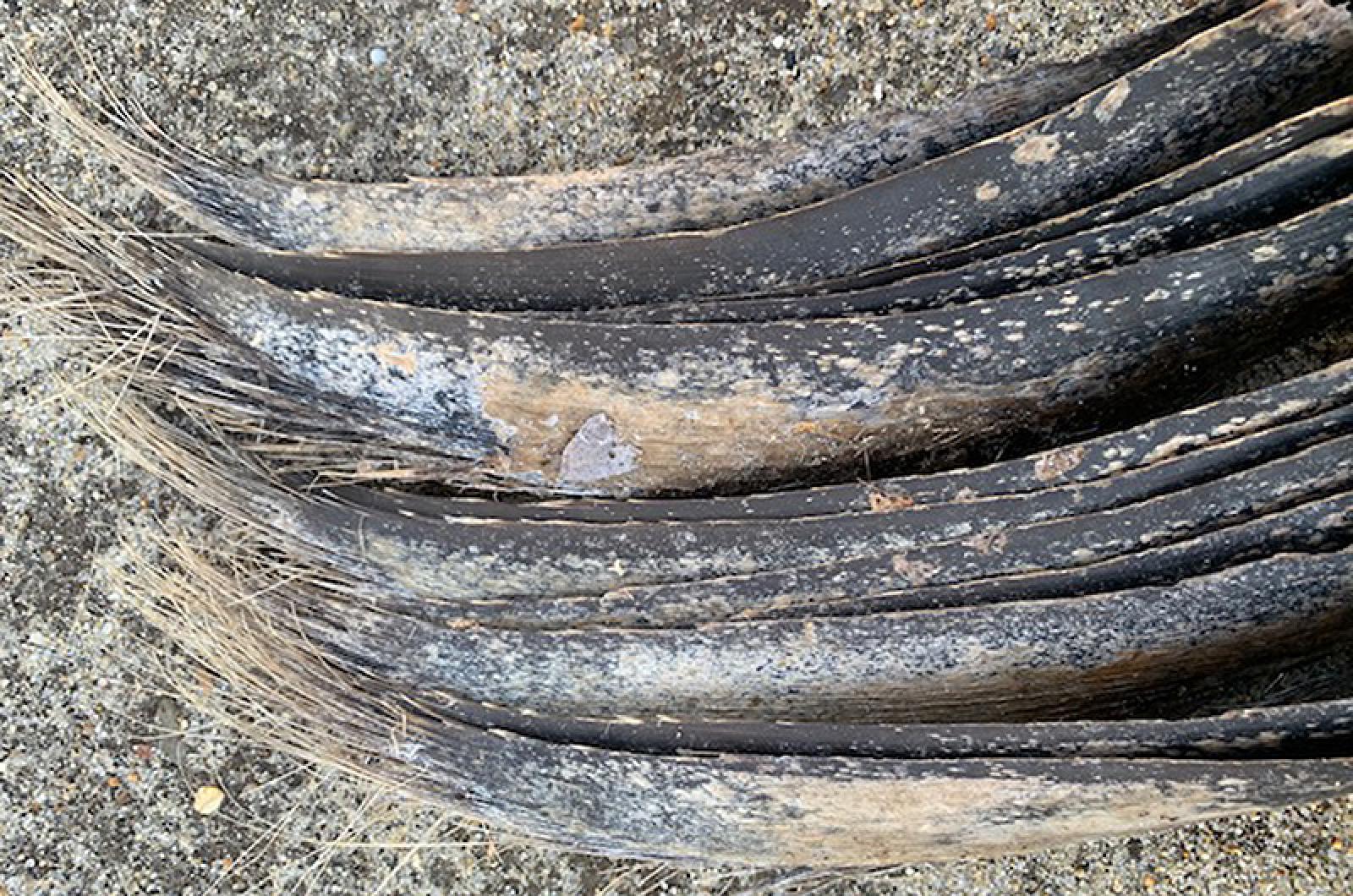Why not live large?
With their immense size, blue whales don’t have any other option. British naturalist Sir David Attenborough effectively explains this creature’s magnitude: “The biggest animal that has ever lived on our plant: a blue whale. It’s far bigger than even the biggest dinosaur. Its heart is the size of a car. And some of its blood vessels are so wide that you could swim down them.”
An adult blue whale weighs up to 200 tons, with a tongue that is comparable to the size of an elephant. Even the smallest baby blue is a hefty two tons — talk about baby fat.
Beyond their bulk, blue whales impress with other abilities. Blue whales emit pulses, groans and moans that can be heard up to 1,000 miles away by other blue whales. The sounds made allow for communication and sonar navigation. Being long-lived, they can sing their song for 100 years or more.
To determine the age of a blue whale, scientists must dig deep into the animal’s ears. By counting layers of cerumen, or ear wax, researchers are able to estimate age by counting wax layers, not unlike counting the rings on a tree. Another interesting method involved examining a female’s ovaries for knobs of tissues, called corpora, that are laid down at each ovulation. Ovulation is believed to occur once every two and a half years, so the number of corpora times 2.5 plus 10 (age at which females begin to ovulate) will give you the age of the animal. Using this method, a Japanese scientist identified a blue whale with 40 corpora that would suggest a ripe old age of 110.
Blue whales really are a big deal, and it was even bigger deal that two rare blue whales were seen last week in the Northeast Canyon and Seamounts Marine National Monuments 130 miles southeast of Cape Cod.
The current population of blue whales in the northwest Atlantic has been estimated from 400 to 1,500 individuals. This is a disturbingly low number when you consider that there were more than 350,000 worldwide and 15,000 in the north Atlantic population in the pre-whaling era. They were aggressively hunted for their oil and blubber, but are now protected by the Endangered Species and Marine Mammal Protection Acts and the International Whaling Commission.
An animal so large is, not surprisingly, a good eater. Blue whales are baleen whales and have fringed plates of baleen attached to their jaw. They have expandable throat plates that help them capture the immense amount of food they need. Blue whales eat by gulping a mouthful of water, then forcing water out through the baleen plates. This leaves behind krill, their favored food, which is quickly swallowed. Daily, blue whales need to eat more than the weight of three pickup trucks combined.
The scientific name for the blue whale, Balaenoptera musculus, translates to “winged whale,” though the second name (“musculus”) could mean muscle or even mouse, a possible prank by Carl Linnaeus, who gave the species this name. These whales appear blue underwater, but when seen on the surface are more of a blue-gray. They have diatoms on their underbelly that appear yellow and gave rise to the nickname “sulphur bottom,” penned by Herman Melville in Moby Dick.
The worldwide and local populations of blue whale remain in trouble. Sadly, American columnist William Vaught says it all when he notes: “Size isn’t everything. The whale is endangered, while the ant continues to do just fine.”
Suzan Bellincampi is director of the Felix Neck Wildlife Sanctuary in Edgartown, and author of Martha’s Vineyard: A Field Guide to Island Nature and The Nature of Martha’s Vineyard.







Comments
Comment policy »